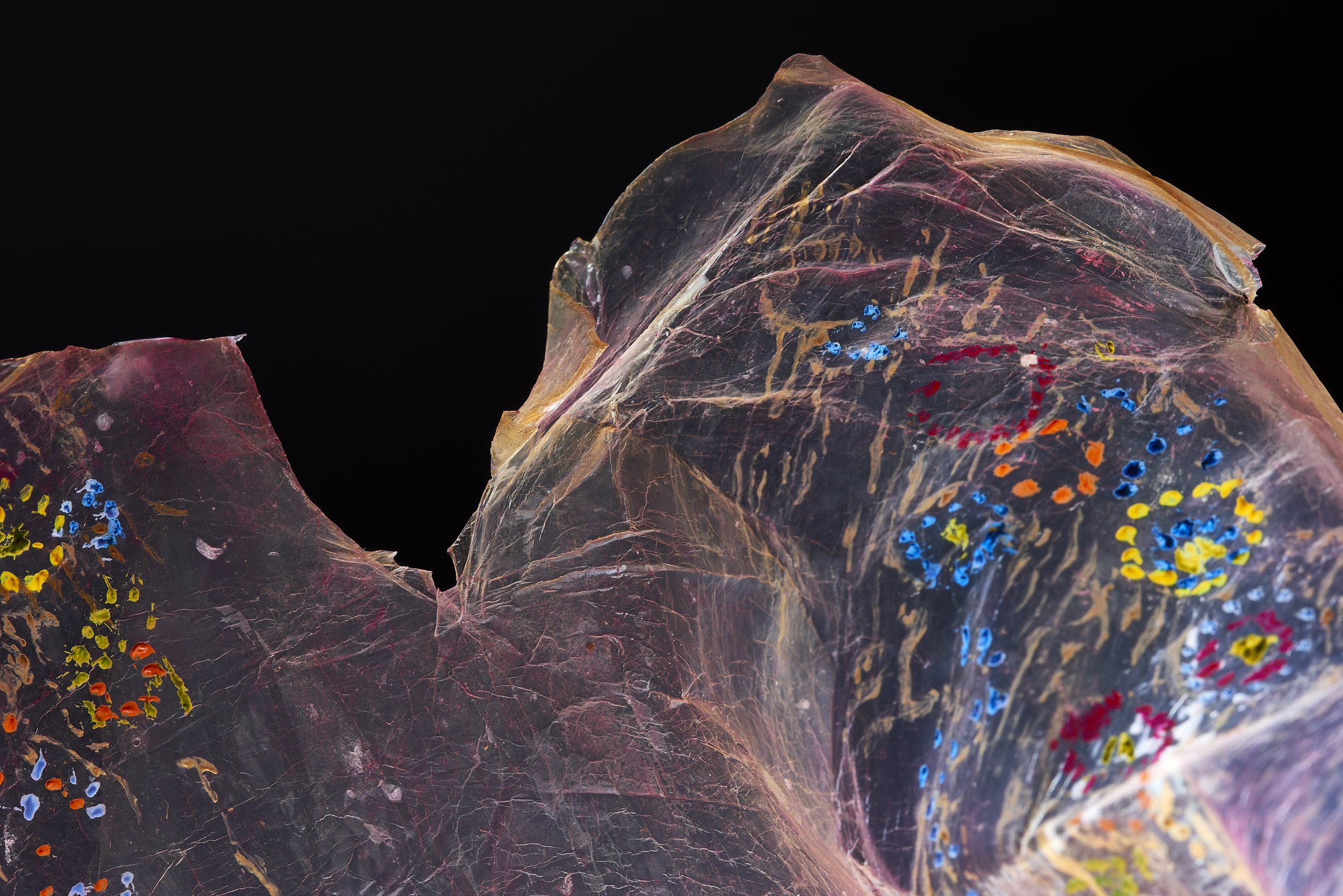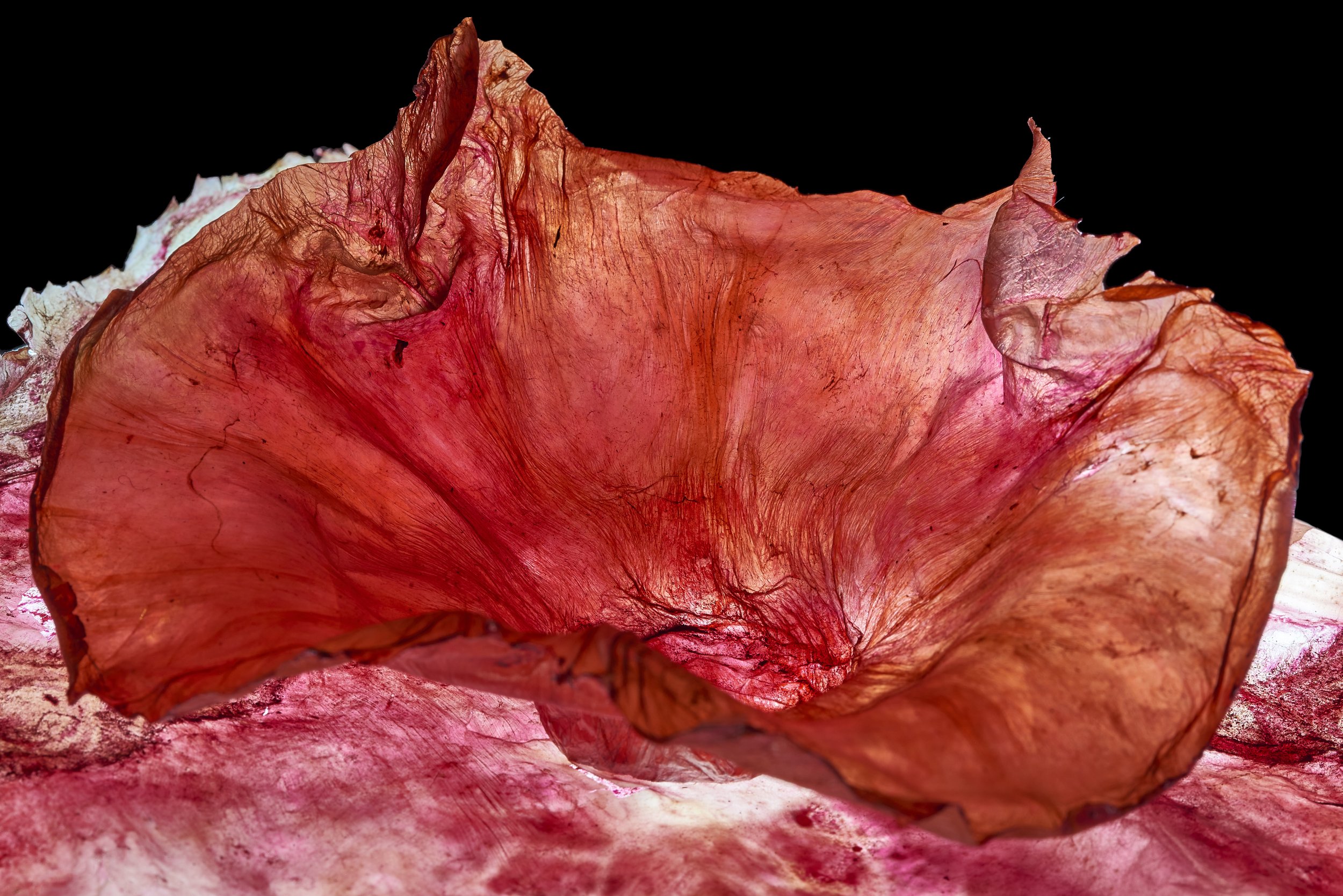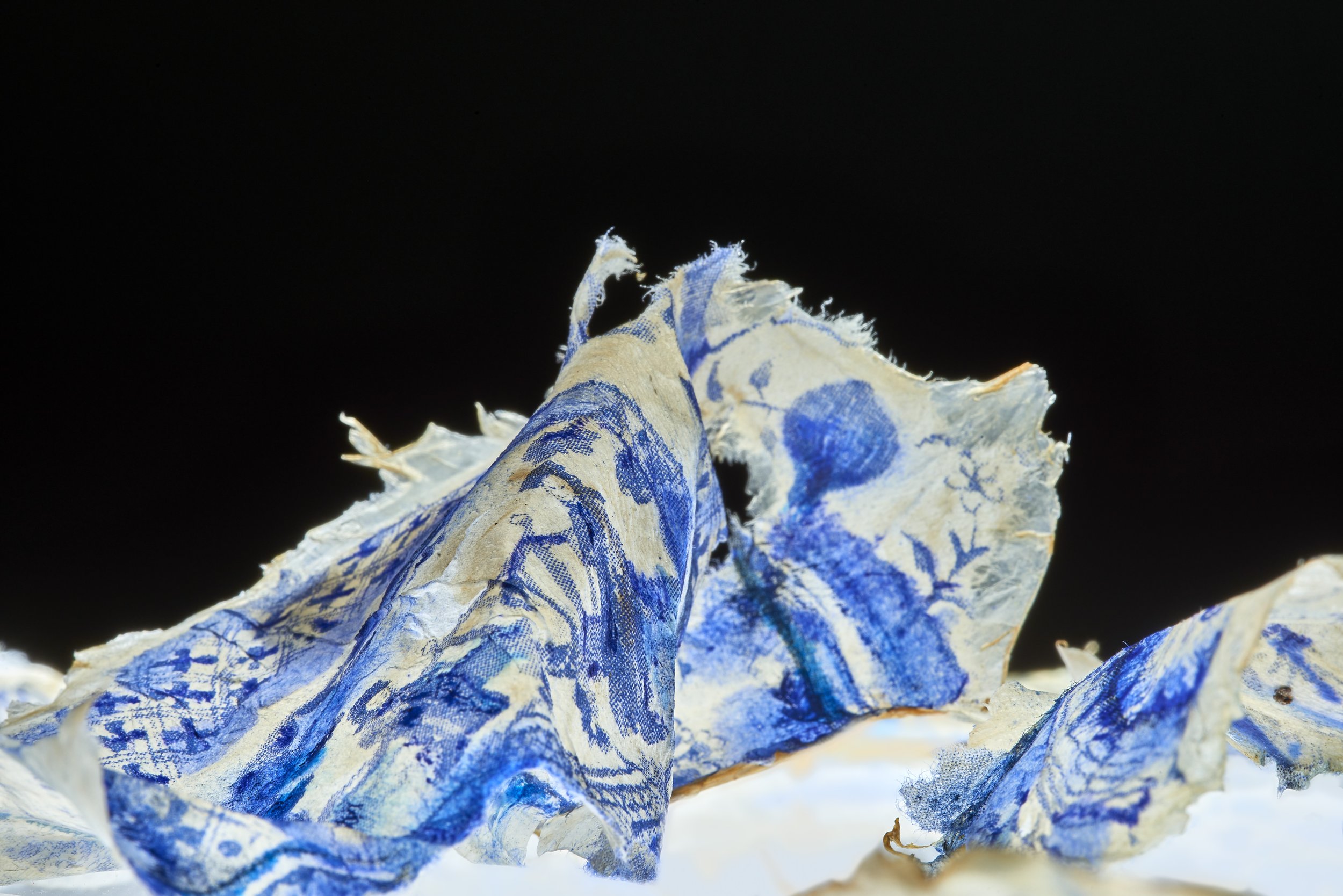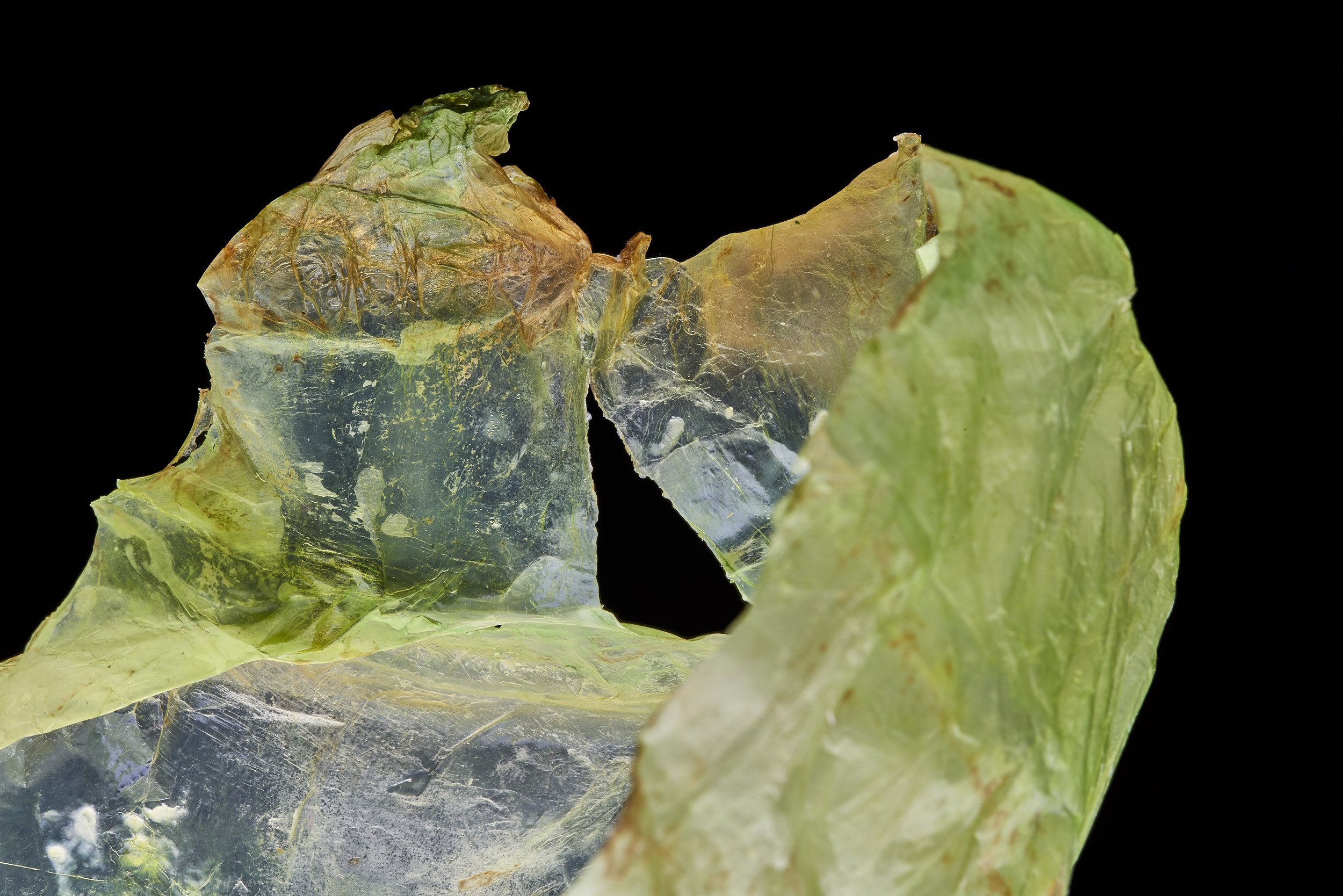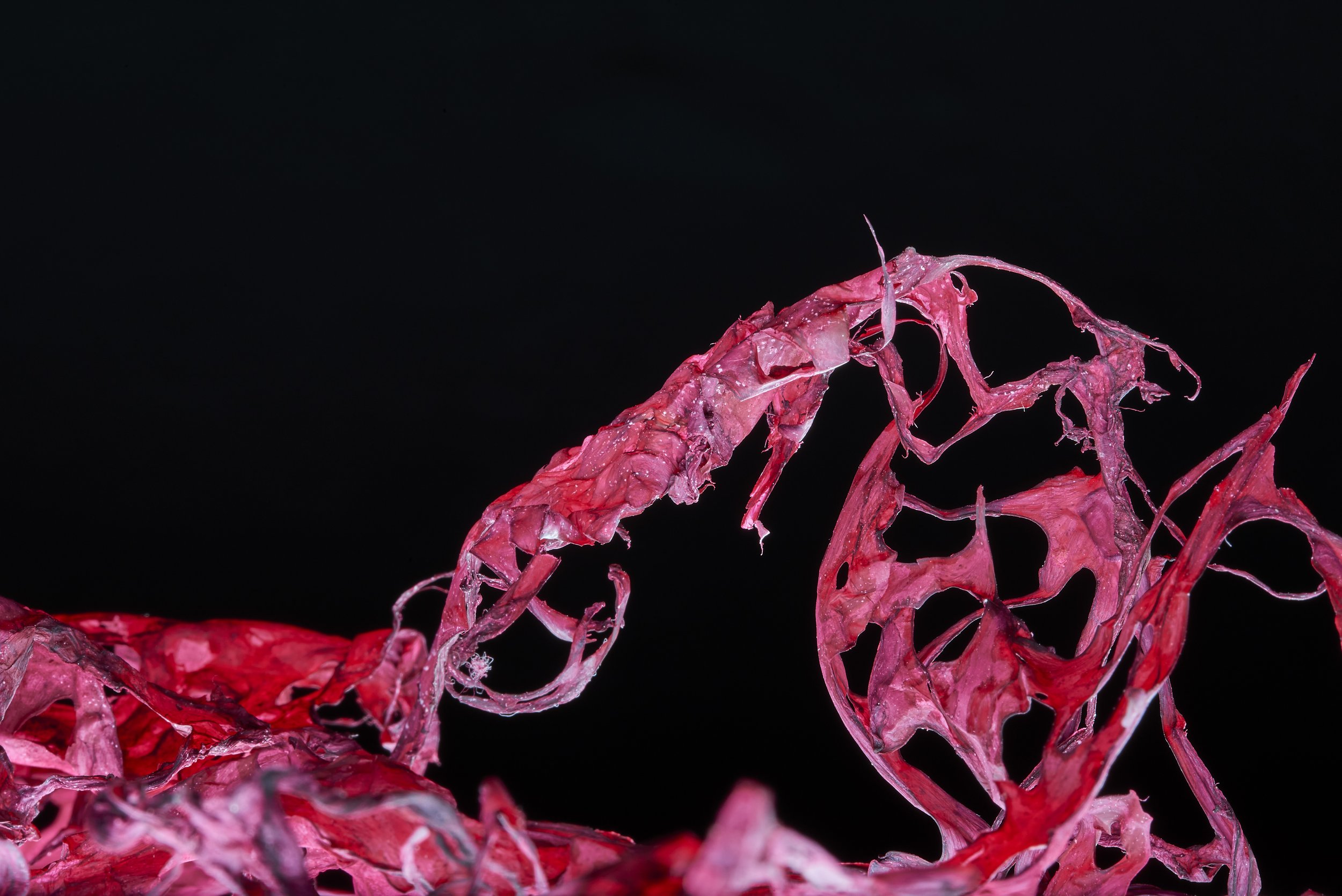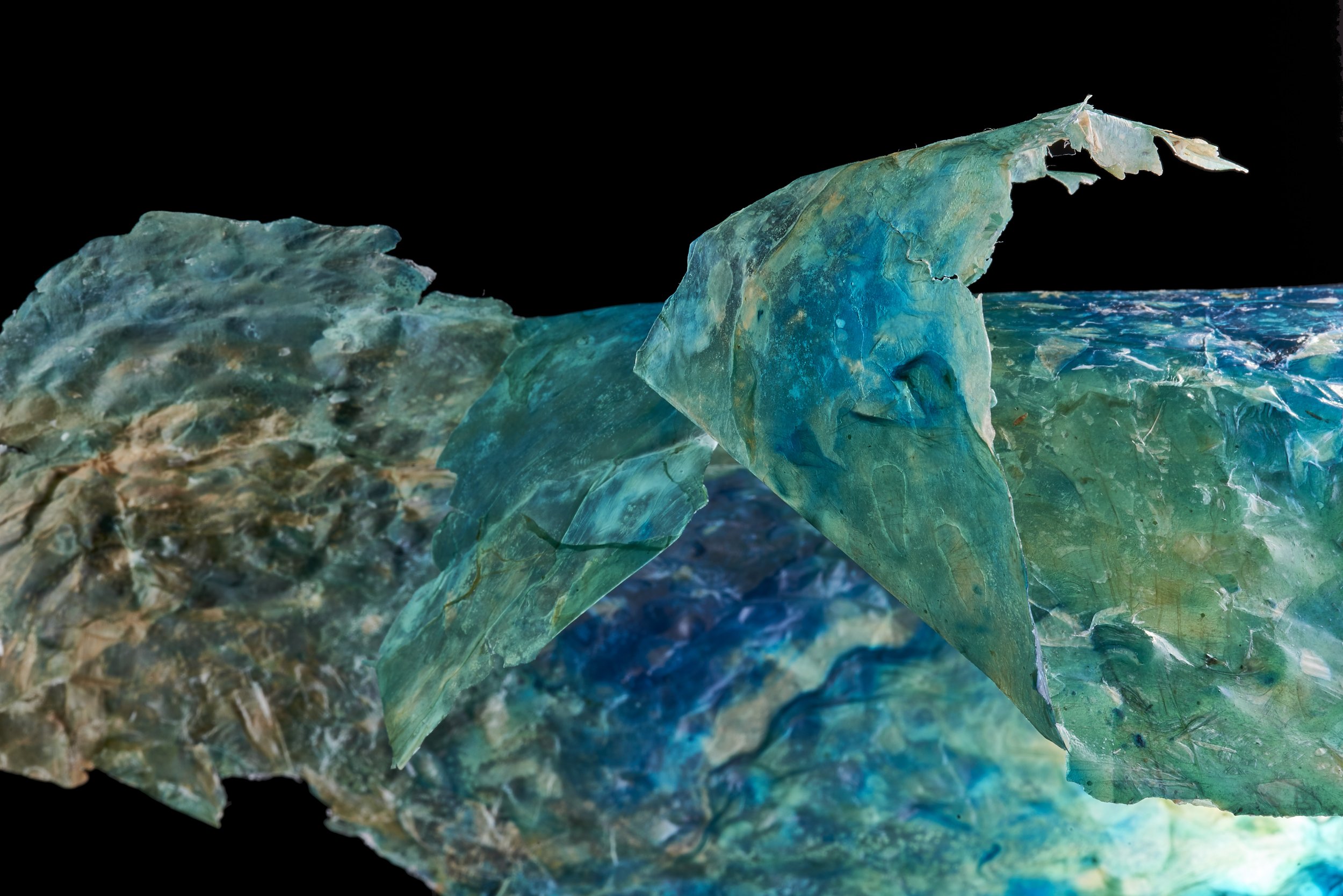GHOSTED MATTER/PHANTOM HURT (and other chimera)
AN INSTALLATION BY LEORA FARBER
25 February - 22 April 2020 | FADA Gallery, University of Johannesburg
GHOSTED MATTER PHANTOM HURT
(and other chimera)
This innovative and exciting installation comprises five major video works and a set of prints that feature digital interpretations of physical artworks that fall under the term 'creative bio-research' or 'bioart' - an umbrella term for art forms that entail the fusion of biology, biotechnology, life sciences and visual art. Bioartists engage with scientific processes, using living and non/living matter as media.
Johannesburg-based artist, Associate Professor and Director of the Visual Identities in Art and Design Research Centre, Faculty of Art, Design and Architecture, Leora Farber has engaged intensively with bioart over the last five years, using bacteria and yeasts as her primary media. Farber's interdisciplinary work, which brings together the usually separate disciplines of art and science, is directly linked to the biological aspect of the University of Johannesburg's focus on 41R. The Fourth Industrial Revolution is a new chapter in human development, enabled technological advances that merge the physical, digital, and biological worlds in ways that create both huge promise and potential peril.
Working either with a cellulose fibre produced by the symbiotic action of the bacteria and yeast or from a mixture of agar and bacterial nutrient onto which pigmented bacteria are painted, Farber produces material 'impressions' of domestic objects such as tea-cups and saucers, plates and bowls. In the video works featured on the ghosted matter installation, Farber extends her use of biomaterials and microbes into the digital realm.
In their initial forms as material matter, the impressions already inhabit an ever-changing state of inbetweenness. This sense of liminality is heightened when the impressions are translated into digital media, which, in itself, foregrounds the transientness of light, time and space. From their states as matter which evokes both the visceral and the ephemeral, in the videos, the impressions appear and disappear across the screen as spectres - weightless ethereal, transient forms which become fleeting semblances of presence that unfold into absence. Through these precarious images of 'things' that are barely things, the viewer-participant is invited to try and grasp the ungraspable - fugitive, fragmented remembrances of familiarity, strangeness, comfort, disease, intimacy, distance, vulnerability, trauma, complicity and loss.
The objects from which Farber's impressions are taken range in design, period, and surface patterning. They include items taken from English bone china and reference traditional English styling and patterning. Others feature the blue and white patterns of Chinese origin which the British copied in their production of blue and white 18th century porcelain, and the Dutch reproduced in their 'Delft blue' porcelain. These designs, or reproductions thereof, have become domestic 'classics' in post-colonies such as South Africa. In their reference to the troubled history of WestEast cross-cultural and economic exchange, the objects resonate as spectral traces of the violent colonial legacies that haunt post-colonial domestic interiors. As hauntologies of British and Dutch Imperialism and colonialism -the very mechanisms that drove the enculturation of capital, set against an historical backdrop of dispossession, exploitation, genocide, displacement and precarity- the filmic impressions evoke uncanny spectres of disquietude that continue to inhabit the present, and haunt the future.
The five video works were shown at Gallery25, Edith Cowan University, Perth, Australia, and at the lziko South African National Gallery, Cape Town, in 2021.
The impressions featured in the video phantom hurt were produced in a microbiology laboratory at the QEII Medical Centre, Nedlands, Perth, in collaboration with Dr Kate Hammer, Senior Lecturer and Deputy Director Graduate Programs in Infectious Diseases, School of Biomedical Sciences, University of Western Australia (UWA) The work was made during Farber's residency at the SymbioticA Centre of Excellence for Biological Arts, UWA. The residency was made possible through the generous funding provided by the South African National Research Foundation and the University of Johannesburg Research Committee.
About Leora Farber
Leora Farber is an artist as well as an Associate Professor in the Faculty of Art, Design and Architecture and Founding Director of the Visual Identities in Art and Design Research Centre (VIAD), University of Johannesburg.
CATALOGUE:
Click here to download PDF
VIDEO RESOURCES:
Aus Panel Discussion with Leora Farber
MEDIA:
Creative Feel : Leora Farber’s innovative new video installation

